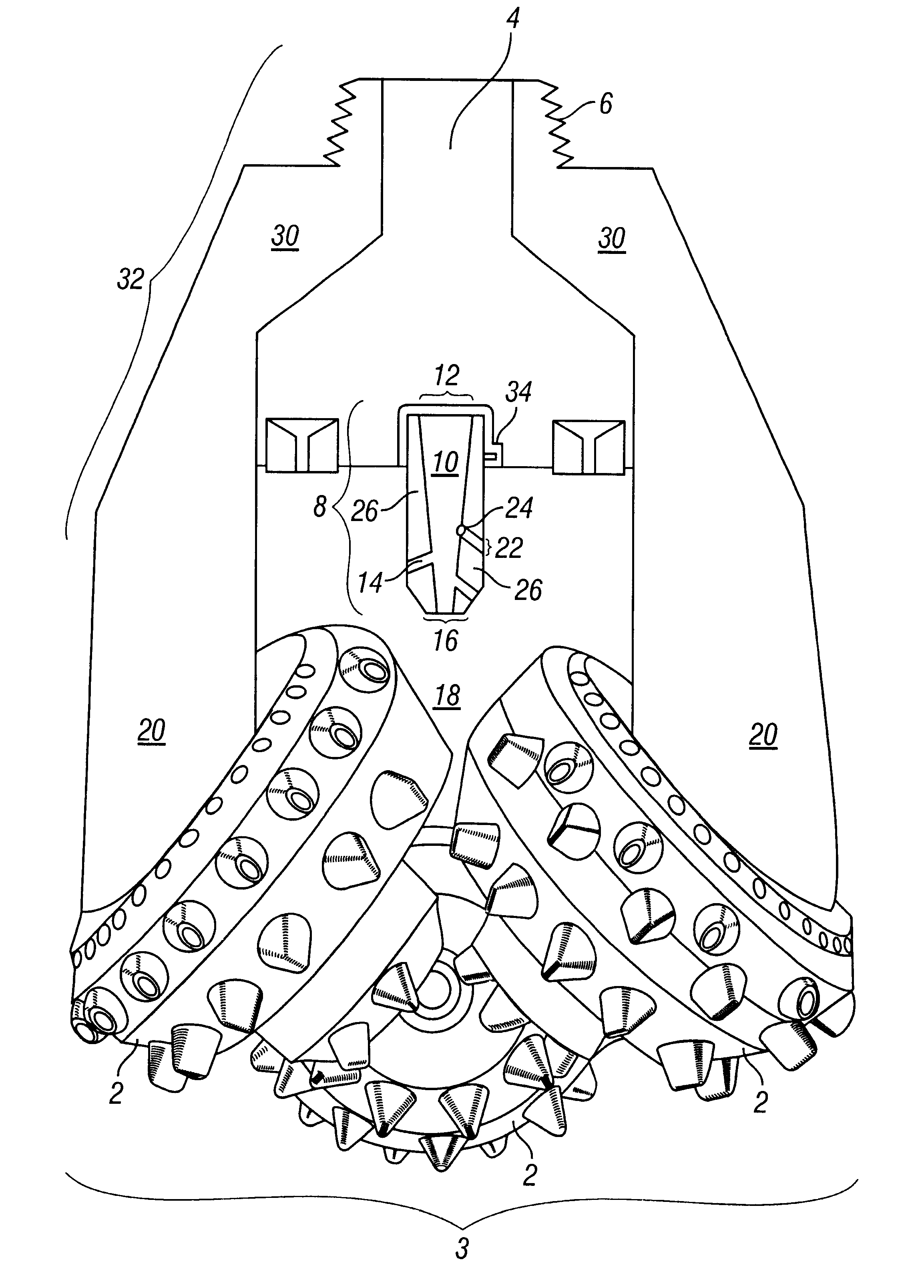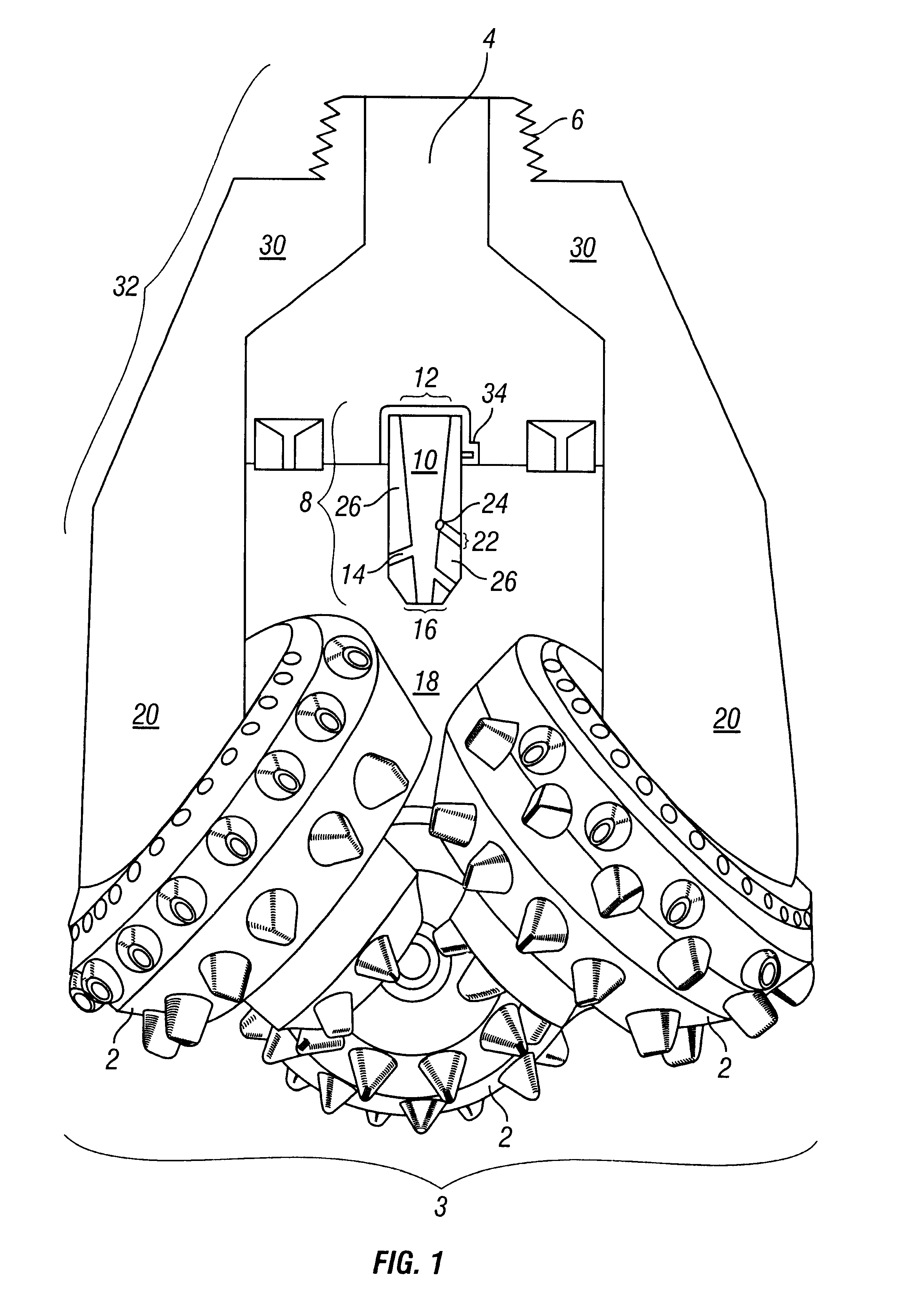Three-cone rock bit with multi-ported non-plugging center jet nozzle and method
a three-cone rock bit and center jet technology, applied in the field of oil field drilling equipment, can solve the problems of reducing the efficiency of drilling process, mud ball formation, and locking of rotary cutter cones, so as to reduce the damage to cutting surfaces, reduce the impact of mud ball, and reduce the effect of drilling process efficiency
- Summary
- Abstract
- Description
- Claims
- Application Information
AI Technical Summary
Benefits of technology
Problems solved by technology
Method used
Image
Examples
Embodiment Construction
The present invention generally provides a non-plugging center jet nozzle 8 and a self-cleaning drill bit, particularly a three-cone rotary drill bit 32, incorporating a nozzle 8. In general, the nozzle 8 has an inlet aperture 12, a main exit aperture 16, and a plurality of side passageways 14. Preferably, the inlet aperture 12 on the nozzle 8 has a greater cross-sectional area than the sum of the cross-sectional areas of the main exit aperture 16 and all exit orifices 22 on the nozzle 8. The exit aperture 16 is of sufficient size (preferably at least 8 / 32 inch diameter) so as not to be plugged by any impediments in drilling mud. Preferably, the main exit aperture has a diameter in a range of 8 / 32 to 20 / 32 inches. So long as the exit aperture 16 remains unplugged, then smaller inlet orifices 24 to side passageways 14 will avoid permanent clogging. The side passageways 14 intersect the central passageway 10. Typically, the side passageways 14 intersect the central passageway 10 at sh...
PUM
 Login to View More
Login to View More Abstract
Description
Claims
Application Information
 Login to View More
Login to View More - R&D
- Intellectual Property
- Life Sciences
- Materials
- Tech Scout
- Unparalleled Data Quality
- Higher Quality Content
- 60% Fewer Hallucinations
Browse by: Latest US Patents, China's latest patents, Technical Efficacy Thesaurus, Application Domain, Technology Topic, Popular Technical Reports.
© 2025 PatSnap. All rights reserved.Legal|Privacy policy|Modern Slavery Act Transparency Statement|Sitemap|About US| Contact US: help@patsnap.com



